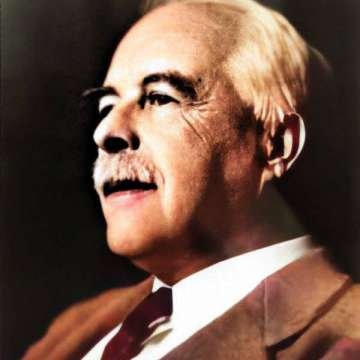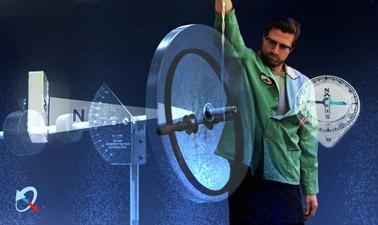The online nuclear reaction simulations on this page enlighten us on the basic principles of these reactions, which are the foundation of nuclear weapons and nuclear reactors for power generation. We will discover what nuclear fission and nuclear fusion are and why they are sources of energy.
What are nuclear reactions
Nuclear reactions are processes in which atomic nuclei interact and undergo changes, which can result in the release of energy. These reactions are fundamental in nuclear physics and in the production of energy in the form of nuclear power.
Types of nuclear reactions
There are two main types of nuclear reactions: fission reactions and fusion reactions.
Nuclear fission reactions
In nuclear fission reactions, a heavy nucleus splits into two or more smaller nuclei, releasing a large amount of energy in the process. This type of reaction is the basis of early nuclear weapons and of energy production in nuclear fission reactors.
Nuclear fusion reactions
In nuclear fusion reactions, two light nuclei join together to form a heavier nucleus, also releasing a large amount of energy. Nuclear fusion is the process that occurs inside the Sun and is also used in the most modern and powerful nuclear weapons.
Nuclear power plants
Nuclear fission reactions are the basis for energy production in nuclear power plants, one of the most powerful sources of electricity in existence. In these nuclear power plants, the nuclei of heavy atoms, such as uranium-235 or plutonium-239, are split into smaller fragments. This process releases an enormous amount of energy in the form of heat, which is used to drive electricity-generating turbines.
Nuclear fusion power plants remain a pipe dream today. Although much progress has been made in recent years, there is still no viable and operational solution for this type of power plant. The technical difficulties are enormous; for example, it is necessary to reach temperatures of hundreds of millions of degrees and extreme pressures to keep the plasma confined long enough for the reaction to produce more energy than it consumes. Eventually, they would be a virtually inexhaustible source of energy with enormous implications. Unfortunately, however, there are no plans to build such a plant in the short or medium term.
Atomic weapons
The same nuclear reactions that generate electricity can also be used for destructive purposes in nuclear weapons. There are two main types: fission bombs (such as those dropped on Hiroshima and Nagasaki in 1945) and fusion or thermonuclear bombs, which are much more powerful and use the fusion of light nuclei such as hydrogen. The devastating power of these weapons comes from the sudden release of an immense amount of energy in the form of explosion, radiation, and heat. Their use has had a strong impact on contemporary history and continues to be a subject of international debate, both because of the humanitarian consequences and the need to control their proliferation and prevent their use in armed conflicts.
Other applications of nuclear reactions
In addition to energy production and atomic weapons, nuclear reactions also have applications in medicine, research and materials production. Radiotherapy uses radioactive isotopes to treat cancer, while research reactors are used to generate neutrons for scientific experiments.
Explore the exciting STEM world with our free, online simulations and accompanying companion courses! With them you'll be able to experience and learn hands-on. Take this opportunity to immerse yourself in virtual experiences while advancing your education - awaken your scientific curiosity and discover all that the STEM world has to offer!
Nuclear reaction simulations
- Alpha
- Beta
- Fission
- Reaction
Alpha
Alpha decay is a variant of radioactive decay whereby an atomic nucleus emits an alpha particle and becomes a nucleus with four units fewer mass number and two units fewer atomic number.
File
Beta decay
Beta decay or beta emission is a process by which an unstable nucleus emits a beta particle (an electron or positron) to compensate for the ratio of neutrons to protons in the atomic nucleus. This disintegration violates parity.
File
Nuclear fission
Nuclear fission is the splitting of a nucleus into lighter nuclei, plus some by-products such as free neutrons, photons (usually gamma rays) and other fragments of the nucleus such as alpha (helium nuclei) and beta (high-energy electrons and positrons) particles plus a large amount of energy.
File
Nuclear reaction
This simulation is intended to show the principle of a nuclear fission reaction. See what happens when bombarding uranium atoms, depending on the concentration. When considering this simulation, note that the proportions of the model presented may not match reality, that the nucleus has been exaggerated and drawn large, and that the electrons around the nucleus are not shown.
Giants of science
“If I have seen further, it is by standing on the shoulders of giants”
Isaac Newton

Amedeo Avogadro
–

Gilbert Newton Lewis
–
Become a giant


Quantum Mechanics of Molecular Structures



Quantum Mechanics for Scientists and Engineers 2



Quantum Mechanics for Scientists and Engineers 1



Quantum Mechanics for Everyone



Preparing for CLEP Chemistry: Part 1



Pre-University Chemistry



Big Bang and the Origin of Chemical Elements



























